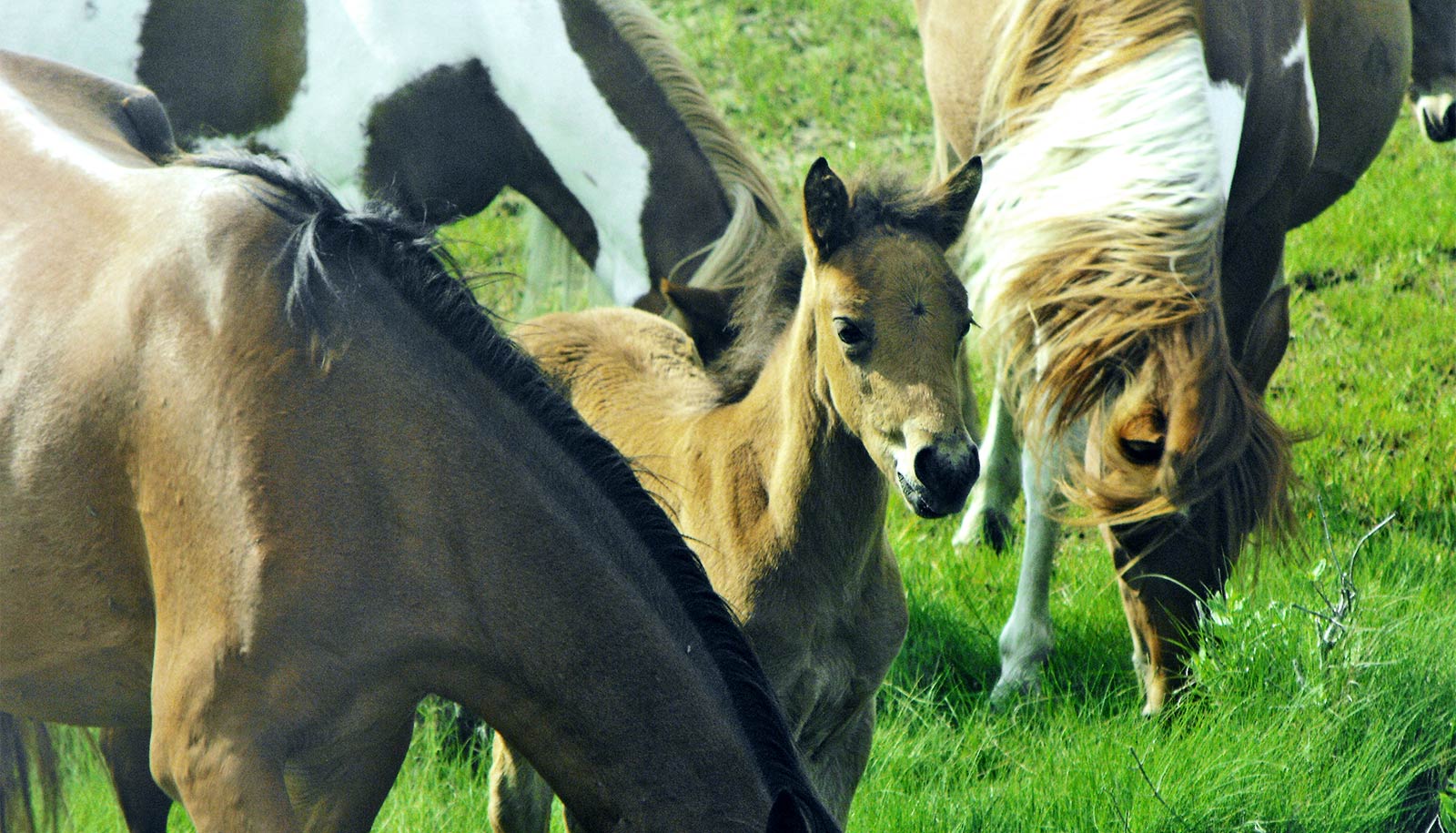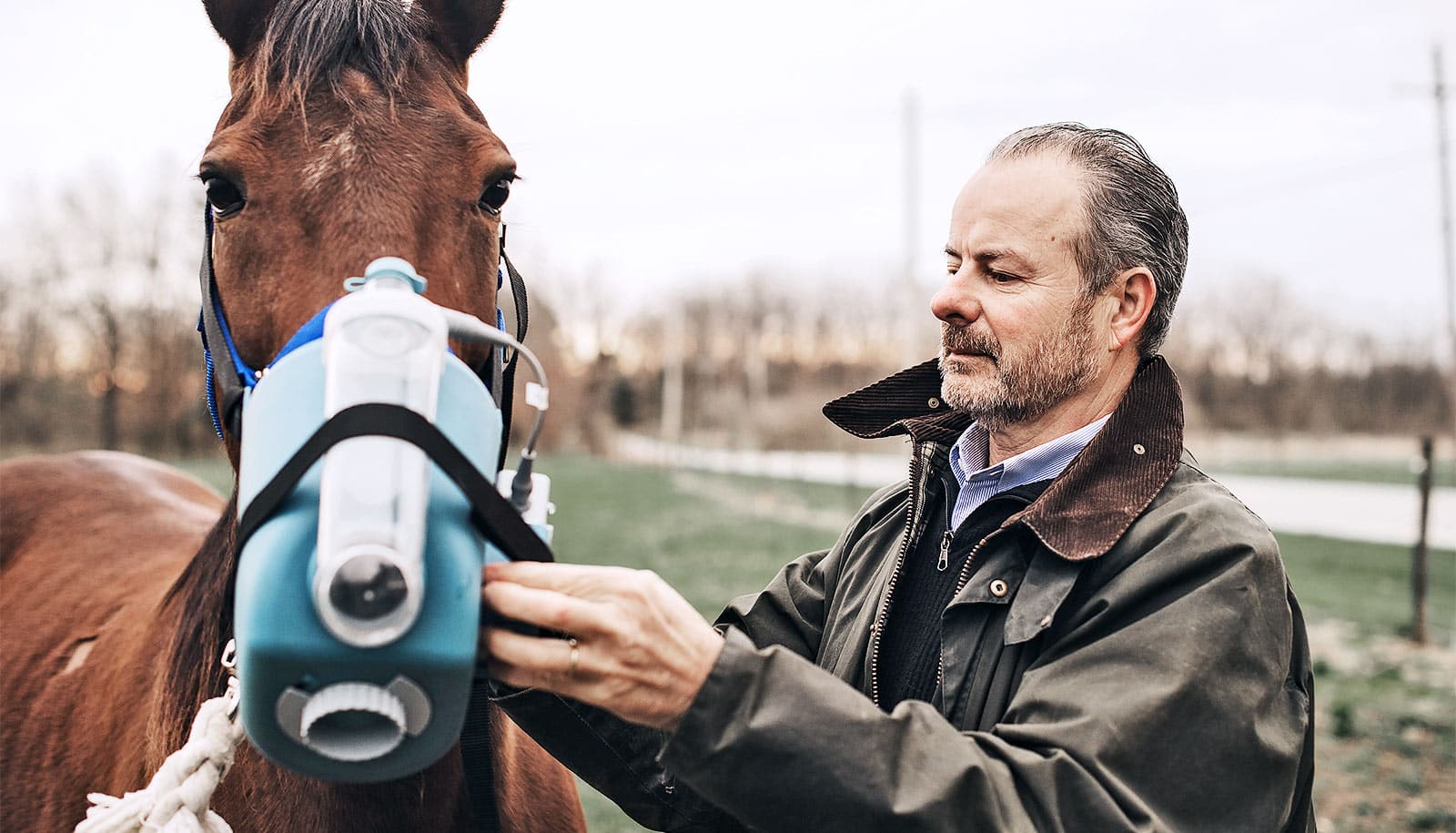A new model identifies potential hot spots for the pathogen Pythium insidiosum in the Chincoteague National Wildlife Refuge, home to the wild Chincoteague ponies.
P. insidiosum, an aquatic, fungus-like pathogen, thrives in standing water and is commonly found in tropical or subtropical environments. In horses it causes pythiosis, or swamp cancer, a fatal infection which often affects the skin or gastrointestinal tracts of the animals.
“Instances of pythiosis in North America are increasing, so it is important to figure out what types of environments are more favorable to the pathogen,” says Gustavo Machado, assistant professor of population health and pathobiology at North Carolina State University and corresponding author of the research in Frontiers in Veterinary Science.
“Recent cases in the Chincoteague Refuge gave us an opportunity to discover the distribution and persistence of P. insidiosum in this environment,” Machado says.
The Chincoteague pony is a unique breed of wild horse that lives on Assateague Island, on the Virginia/Maryland border. In the past three years, 12 of the horses have become infected with P. insidiosum and developed pythiosis.
Transmission routes for pythiosis are still not well understood. Machado and colleagues took environmental samples from 136 sites on Assateague Island inside the Chincoteague Refuge. They tested the samples for evidence of the pathogen, then created a model to predict locations where it would thrive.
The model found that the most favorable months for the pathogen were during the summer—June through August—and that the pathogen was more prevalent in the northern part of Assateague Island than in the southern area.
“Pythiosis and its transmission routes are still not very well understood,” Machado says. “We do know that it has active and dormant phases. When active, it is attracted to hair and vegetation that looks like hair. Ponds can be perfect habitats for this pathogen: shade, clear water, appropriate vegetation, and mammalian hosts.
“Hopefully this model will help caretakers manage the horses in ways that can reduce their exposure to this pathogen.”
Additional coauthors are from the US Fish and Wildlife Service, the University of Florida, and NC State.
The US Fish and Wildlife Service and the USDA National Institute of Food and Agriculture McIntire Stennis project supported the work.
Source: NC State

